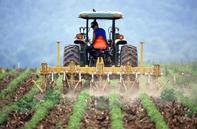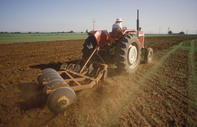Tillage
The true meaning of tillage refers to any preparation of the soil that is to be cultivated.

This includes ploughing, harrowing or tilling. These can be done manually (with a spade) or mechanically, with equipment as illustrated below. Tilling of the soil also commonly refers simply to the preparation of the seed bed and the working of the top 20 to 30 cm of soil referred to as the topsoil.
Ploughing

Ploughing is the manipulation or turning of the soil to a deeper level. This depends on the crop that is to be planted, the depth of the crop’s root growth and the nature of the soil structure.
Ploughing is generally done if there are barriers in the soil that hamper root development and drainage.
If soil is compacted ploughing also loosens the compaction. If fertilizer, organic fertilizer, compost, manure or lime needs to be mixed into the soils root zone this is achieved by ploughing it into the soil. This is normally done to a depth of anything between 30 and 100 cm.
Harrowing

There are a few kinds of harrows but the most common are the disk harrow, spike and the spring tooth harrows. The harrow is the tool used by farmers to level and prepare the seed bed for the planting of seeds or seedlings.
The harrow is used to break up the soil sods and weed or crop residue in and on top of the topsoil. This also creates a more homogenous topsoil structure, making it easier for the young new roots to develop after germination.
By Louise Brodie